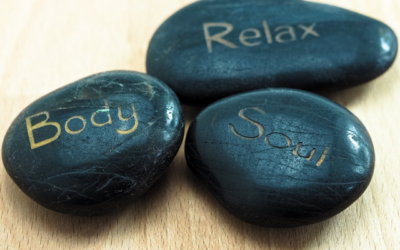The Physical & Mental Benefits of Breathwork and How to Start
Physical Benfits
By breathing deeply you access your parasympathetic nervous system and slow down your heart rate and lower your blood pressure, creating a feeling of calm. You also rely on your diaphragm rather than your chest, allowing your chest and shoulders to relax. When you do this, larger amounts of oxygen can reach your organs.
Here is how to focus on the physical aspects of your breath.
- Breath in through your nose and allow your belly to expand with air and then your chest. This may feel weird at first but keep practicing.
- Tune into the muscles and bones moving in your body. What are you noticing?
- Observe how your body feels when you move from shallow breathing to deep breathing.
- Take a minute to do this exercise and see how even just a minute slows you down.
Use this affirmation: “I am intune to what my body needs.”
Mental Benfits
Deep breathing also helps slow and calm the emotional turbulence of your mind. There are studies that support how breathwork can help treat depression, anxiety and PTSD. Breathwork is used with those who have mental health issues as a way to calm and focus the mind. This is one of the reasons meditation helps you focus.
Here is how to focus on the physical aspects of breath.
- Breath in through your nose and allow your belly to expand with air and then your chest.
- Become aware of the thoughts in your head, but do not attach to them – you are not your thoughts, you are the awareness of your thoughts.
- Feel what emotions come up, but do not attach to these emotions – you are not your emotions, you are the awareness of your emotions.
- Notice your inner voice. Are you in ego or soul consciousness?
Use this affirmation: “I am right where I need to be.”
Now, combine the breathwork with the affirmations for 2 minutes. The first minute scan your body and mind using the prompts from above, then the second minute, repeating the affirmations together; “I am right where I need to be. I am intune to what my body needs.”
This is a form of meditation. If you just did the exercise, congrats! You can meditate! Next week, I will bust through 3 Myths of meditation. These types of practices though seem insignificant, have a major impact on our body and mind in a positive way when we implement them.
Here are 4 Ways to Stay Connected During Times of Crisis.
Why Our Spiritual Practices are Important During Crisis
How you can stay connected.
Similar Posts
7 Skills For the Art of Integration
It’s been 10 years since I’ve been in the health and wellness industry helping people live healthier lives. I started helping others where I started with myself; fitness. Then I earned my certificate in Health Coaching and focused on diet. In the midst of all this, I was having a quarter life crisis and what I call spiritual awakening and this brought me to integrate my emotional and spiritual self with the physical and mental.
What to Do When You Are Stressed, Exhausted or Overwhelmed at Work?
You know when you are stressed at work, uninspired, frustrated or mentally blocked and you push through because… well it’s work. Only to find that maybe you are not performing your best work, or you feel resentful or completely depleted? Yeah, why do we do that?
How I Mastered Sustaining Healthier Eating Habits and How You Can Too
The art of mastering healthier eating habits is a process and takes time but I can help get you started with just this article.





